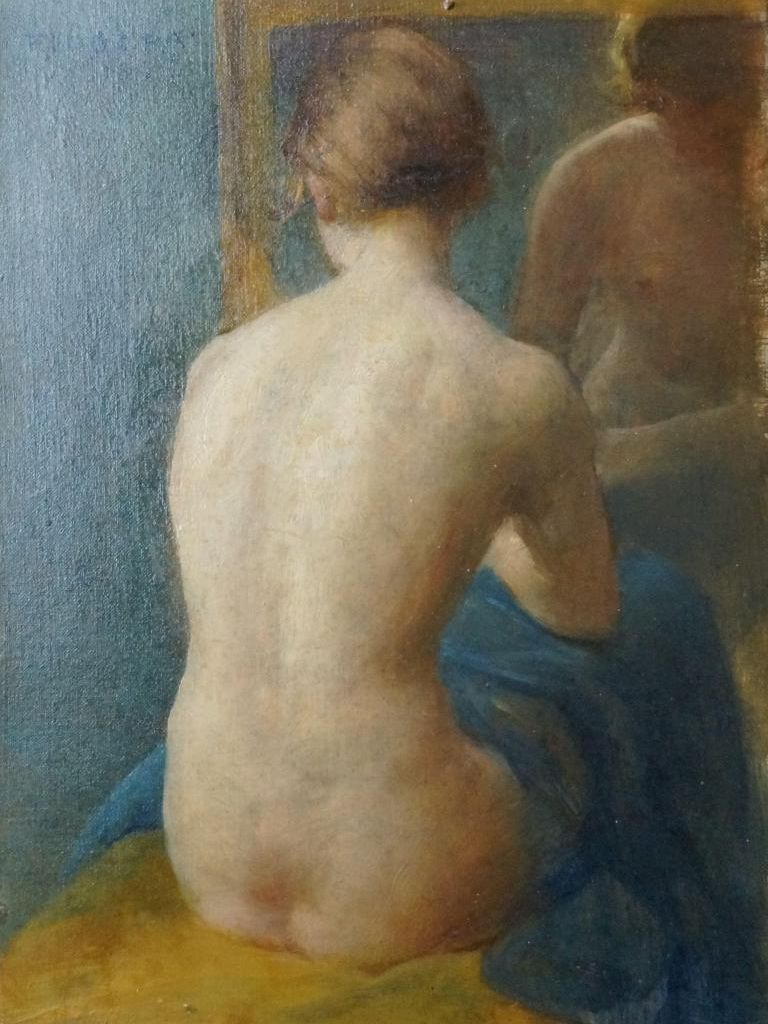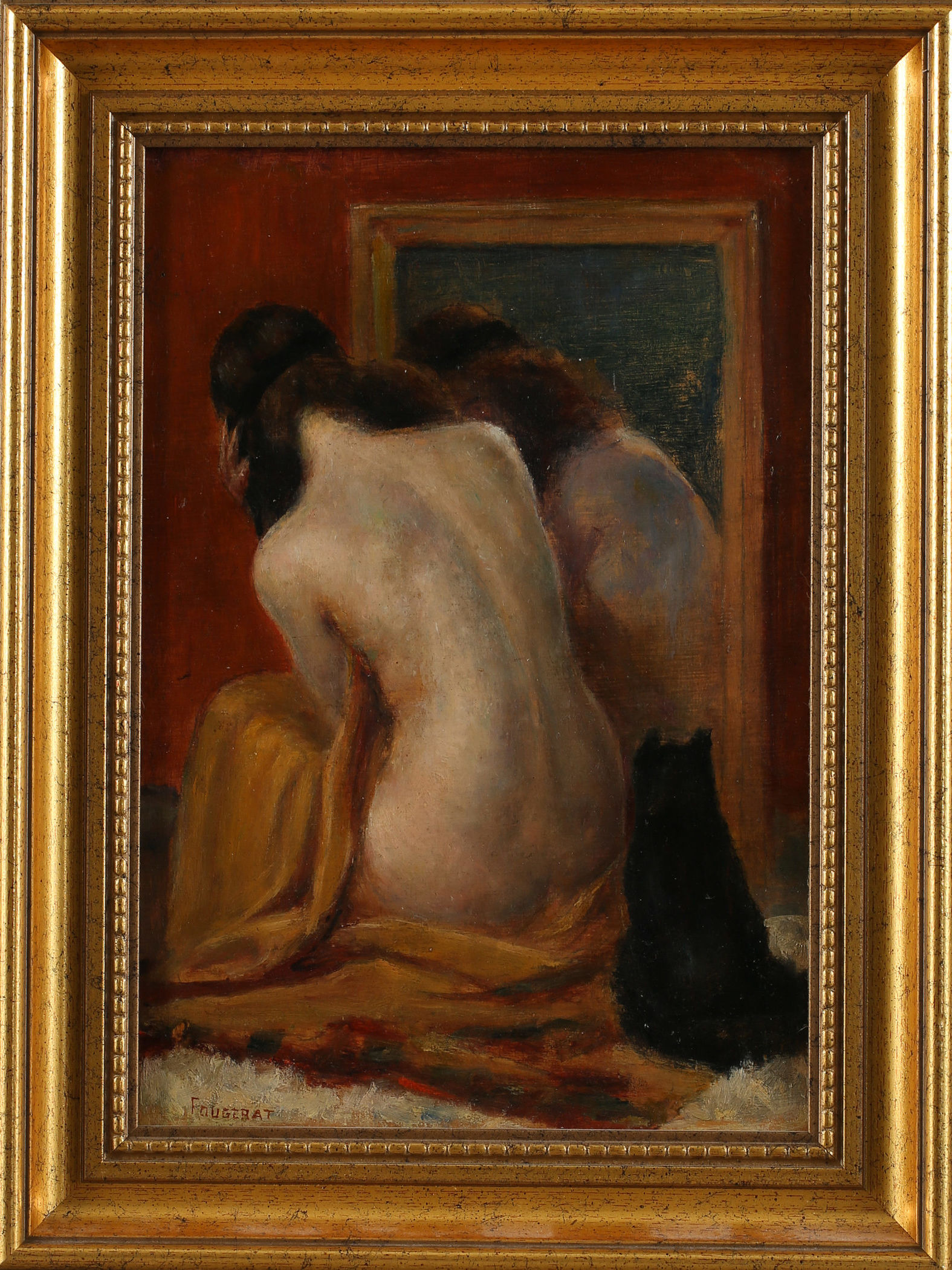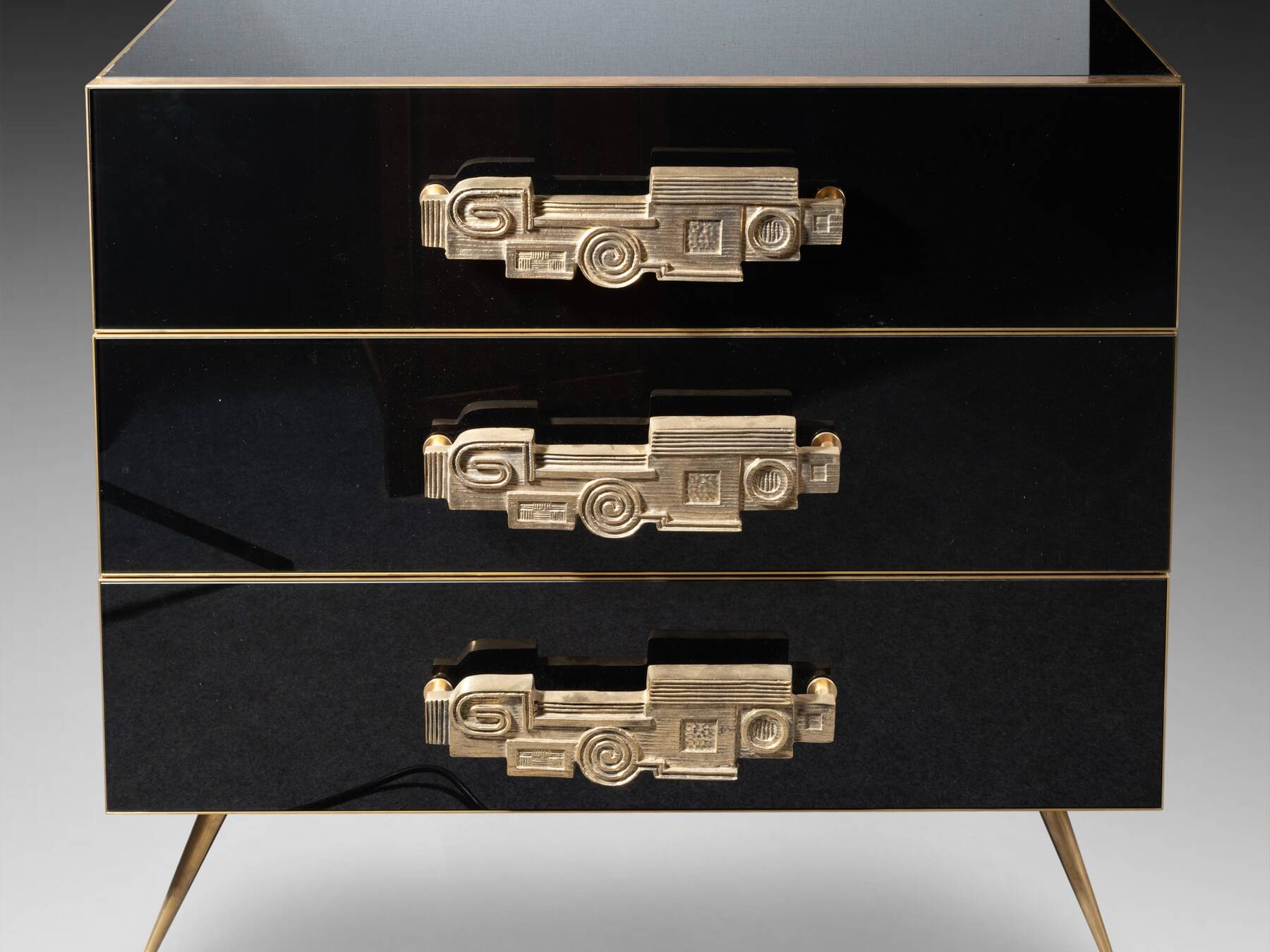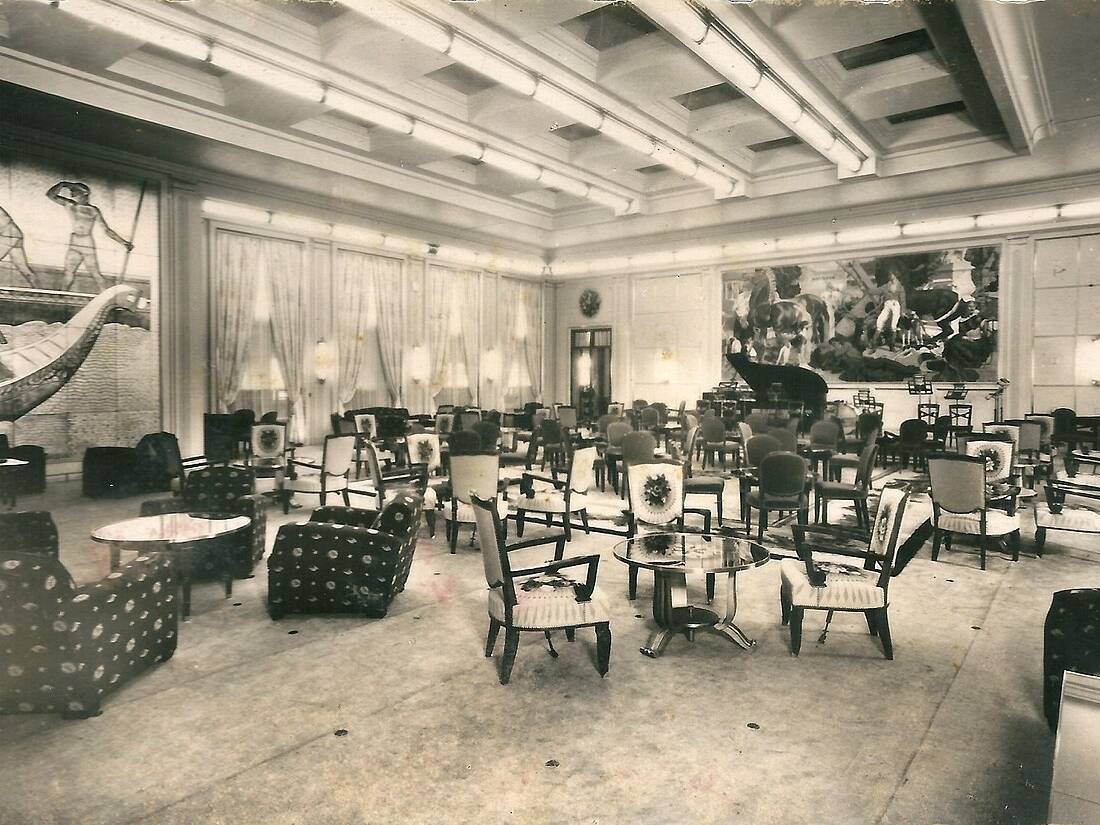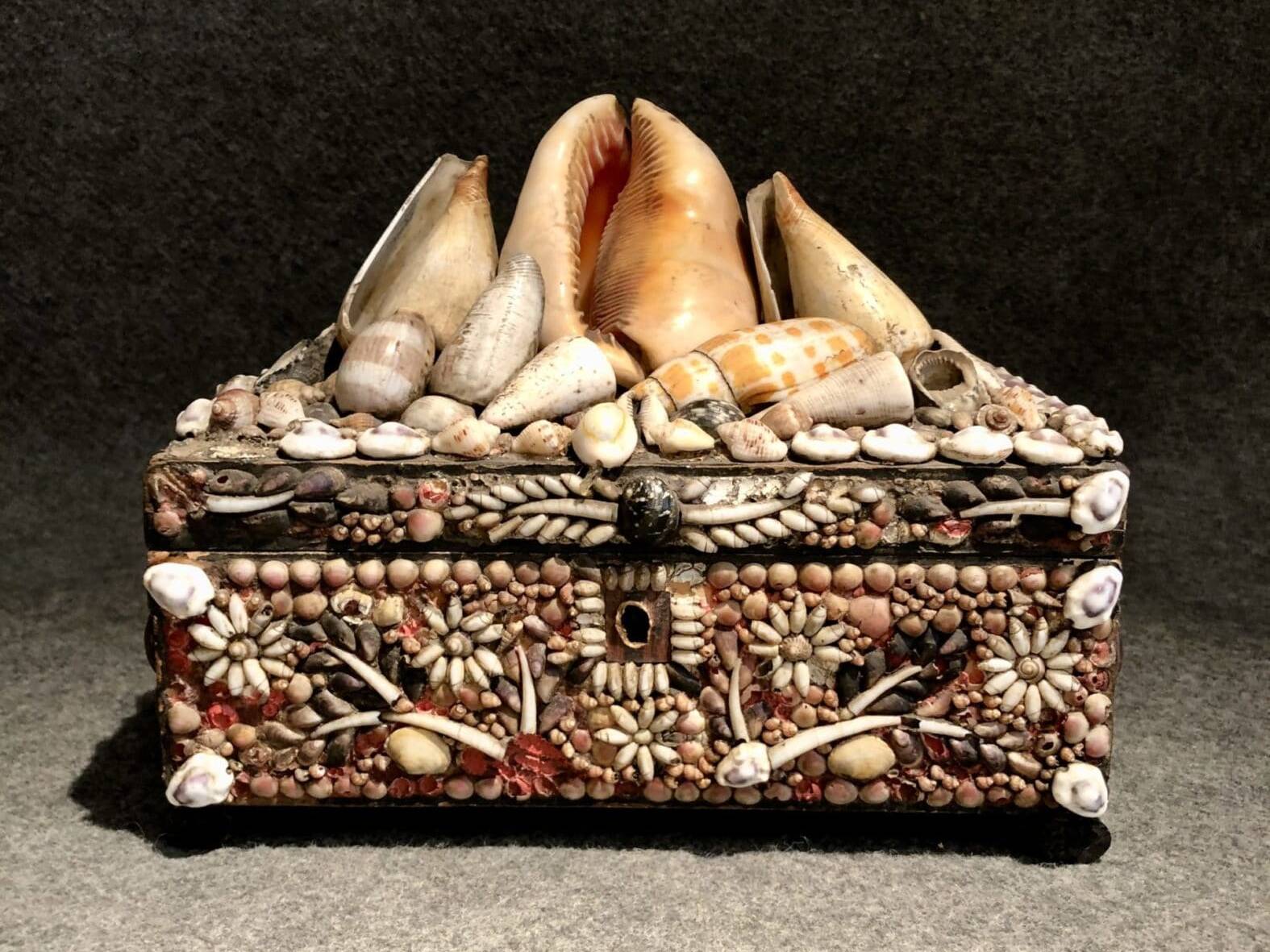Emmanuel Fougerat: a life dedicated to art
Emmanuel Fougerat, born in 1869 in Rennes, France, began his artistic career at a very young age. As a teenager, he became a pupil of the Rennes Regional School of Fine Arts and followed a classic path, accompanying his training as a painter by frequenting well-known masters such as Albert Maignan (1845 – 1908) or Jean-Paul Laurens (1838 – 1921), very famous for his History paintings.
Although he painted all his life, he nevertheless chose to follow a more formal career that would lead him to the post of director of the École supérieure des beaux-arts in Nantes. He was also the founder and curator of the Museum of Fine Arts in the same city before being named Knight of the Legion of Honour in 1912, a deserved recognition of his research work in favour of culture and art history.
For Emmanuel Fougerat was also a remarkable art historian, developing through several works the works of painters Albert Besnard, Paul Baudry, Eugène Carrière, Théodore Chassériau or Camille Corot, to name but a few. Parallel to this institutional and scholarly career, he remained faithful to his first love, painting himself all his life and enjoying a certain recognition as he exhibited until 1945 at the Salon des artistes français.
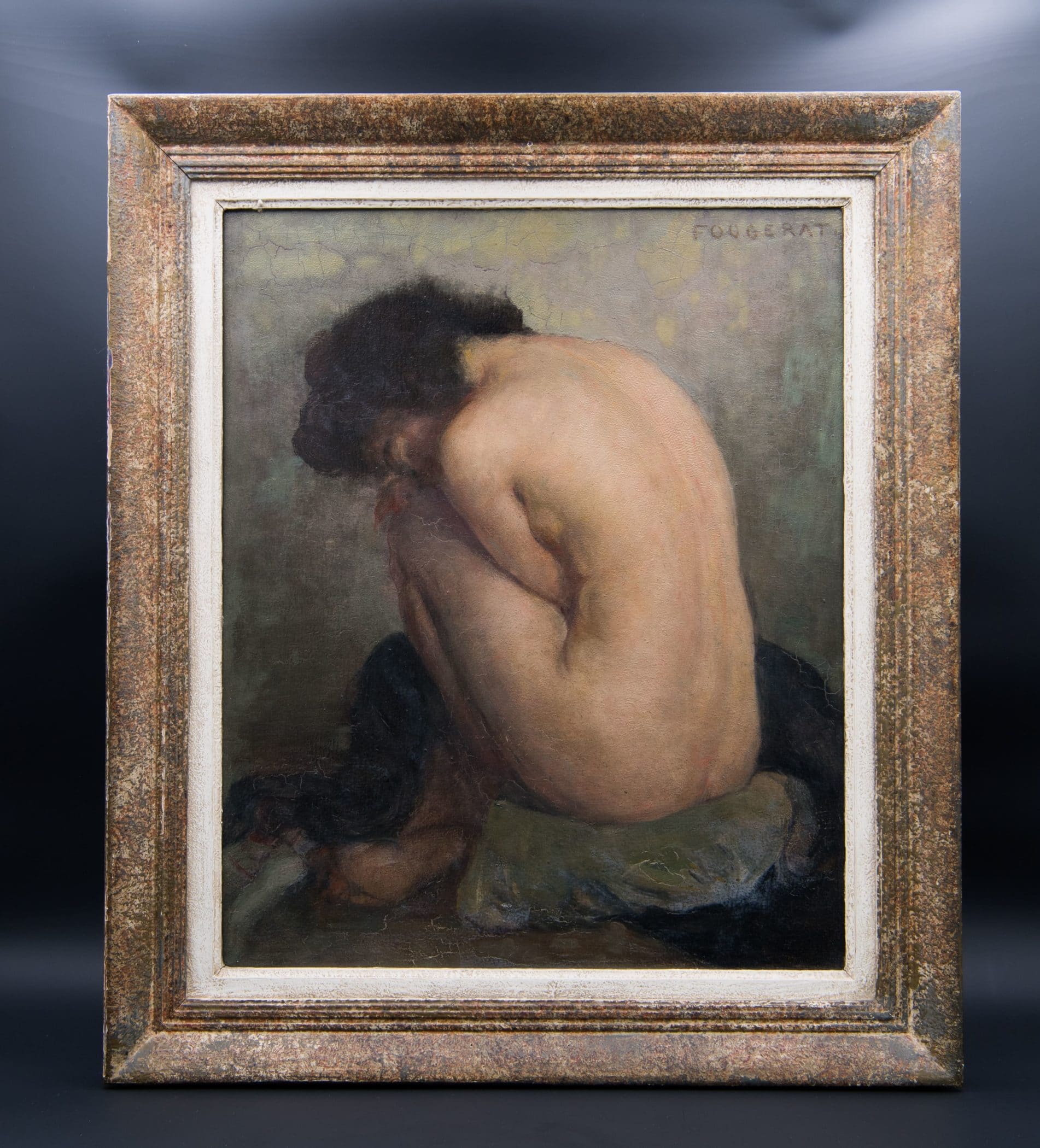
His work consists mainly of genre scenes, portraits and nudes. Nevertheless, the quality of her female nudes is noteworthy. Carried by the classicism of this subject, Fougerat manages to distinguish himself by a remarkable technical mastery. His style inherited from impressionism adds a sfumato strangely reminiscent of the famous Hammershøi (1864 – 1916). Fougerat’s paintings, like those of the Danish master, depict a silent, deep and mysterious atmosphere.
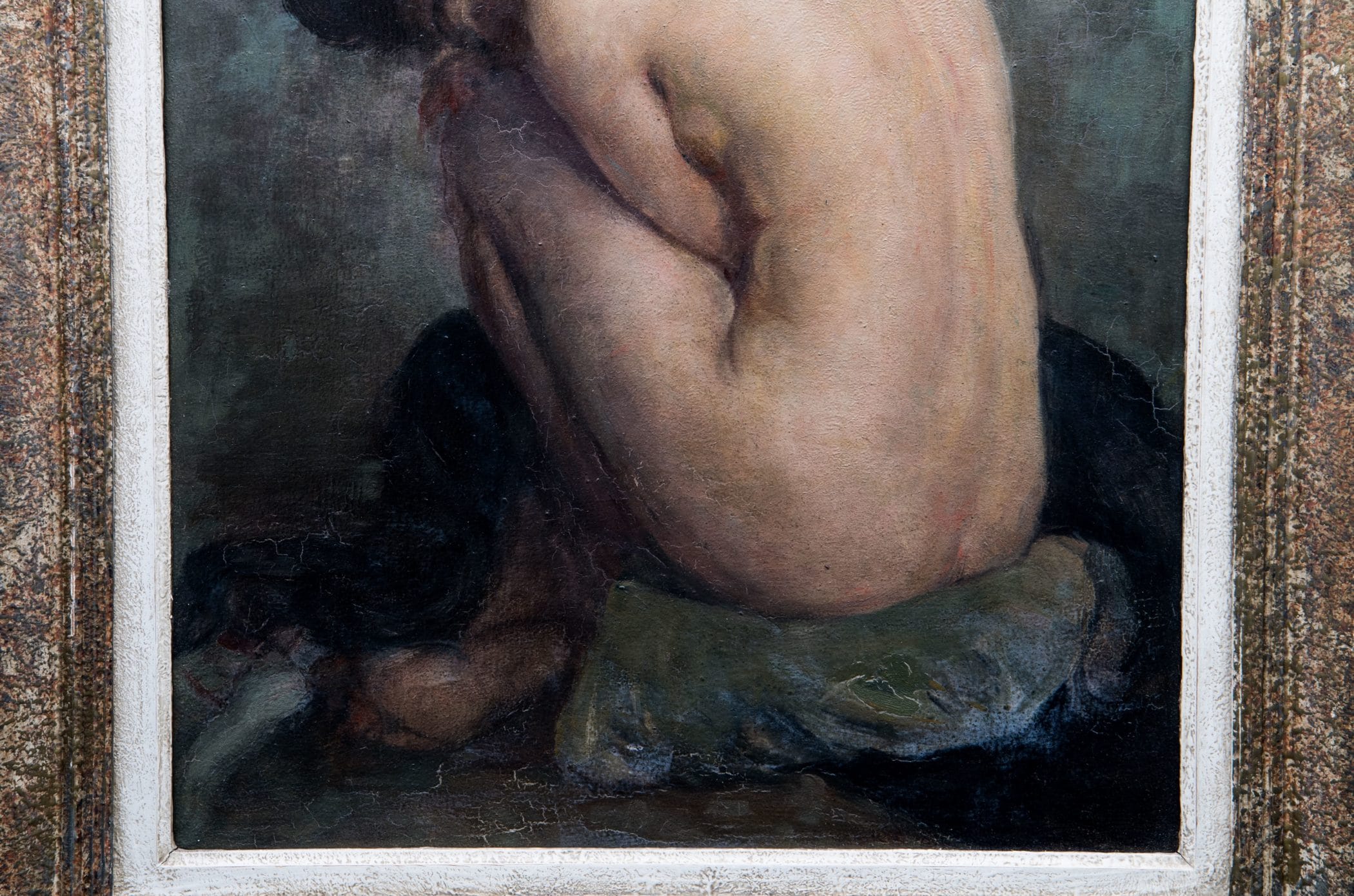
A delicate and muffled painting
Fougerat places the spectator in a singular situation and we are entitled to ask ourselves: is this a model or a real scene? Are we the voyeurs of an intimate scene or the privileged spectators of a workshop pose session? Fougerat’s works are borrowed from silence and the timid lights that illuminate his paintings are those of late winter afternoons.
The unusual and recurring choice to represent the back models is strangely reminiscent of Hammershøi’s biases. He went to Paris in 1889. Perhaps our painter admires the work of the Dane on this occasion?
All his life, Fougerat was a sensitive painter of muffled atmospheres. The influence of the painter Camille Corot (1796 – 1875) on whose work he worked for a long time, his knowledge of the techniques and subtleties of composition of 19th century painters undoubtedly had a great effect on him.
Naturally, the attentive viewer will find throughout Emmanuel Fougerat’s work, these intimate and often small paintings. Ours is in this sense a remarkable example of great sensitivity.
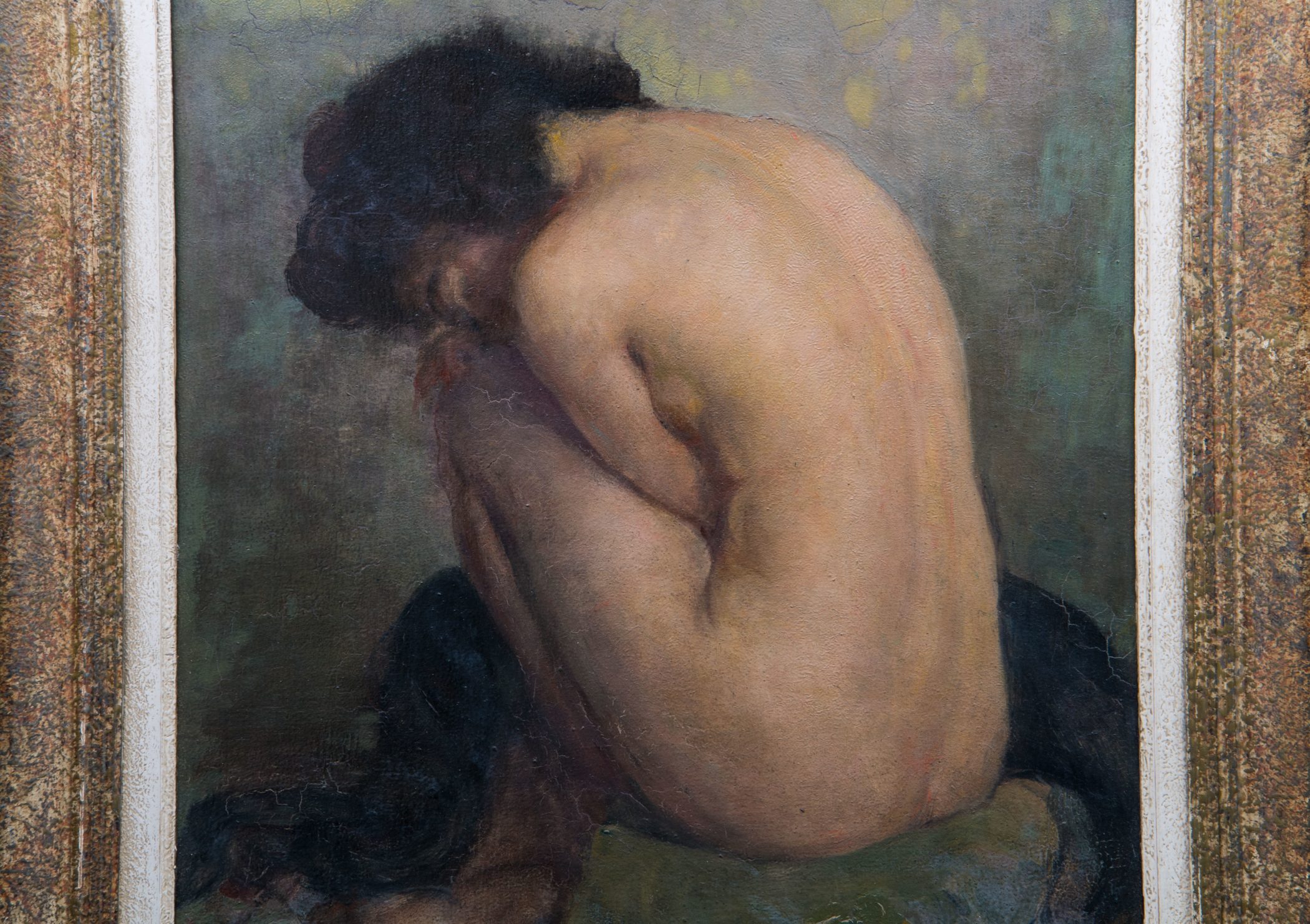
Marielle Brie
Art Historian for Art Market and Cultural Media
Author of the blog Objets d’Art et d’Histoire
Autres ressources et documentations
17 April 2025
The Middle-Ages Furniture
Rare and highly sought-after, Middle-Ages furniture is making a strong comeback. An overview of this market, where enlisting the guidance of a professional is strongly advisable.
18 March 2025
Murano Glass Furniture
Since the beginning of the 20th century, Murano glassmakers have been exploring new horizons. After classic lighting and decorative art, Murano glass is now used to adorn…
16 December 2024
A bronze triton after the sculptures of François Girardon (1628 – 1715) in Versailles
This fountain element is all the more admirable as it is sculpted after the masterpieces of the Pyramid Basin, on the parterre of the North Wing of the Versailles gardens.
18 November 2024
Tyco Bookcase, by Manfredo Massironi, for Nikol International
A pure creation of optical art research in the 1960s, the Tyco library shelf designed by Manfredo Massironi invites the viewer to bring the work of art to life on a daily basis.
3 August 2024
The Ocean Liner Style
In the 20th century, the immense ocean liners connecting the Old Continent and the New World were ambassadors of tastes and innovations on both sides of the Atlantic.
15 July 2024
An 18th Century Shell Box
From the Regency to the death of Louis XV, the art of the shell was the center of all attention.

